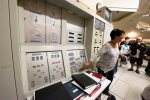One of the best things about being a teacher is that I can always change things up for the betterment of my students! As such, I came up with a new summative assessment this semester: a social history interview project. Years ago, during my student teaching phase in Korea, my mentor teacher asked her world history students to complete a report after watching one of the student-led interviews of a Holocaust survivor. I had been thinking a lot about this website as project-based learning; not about the report the students were asked to prepare.
Then, during my master’s program at Grand Canyon University, I learned a lot about social history. It’s definition: the emphasis on the interaction of different groups in society, which (arguably) began in the 1960s and initially focused on disenfranchised social groups (but later began to focus more attention on the middle and upper classes).
Putting the two together, project-based learning and social history, I came up with this semester’s new summative assessment, the Social History Interview Project, which can now be viewed on i.nspiration e.ducation, the YouTube channel I started with my colleague and master educator, Meg Chandler.
My dream was to continue this project year after year, until the database became vast. Alas, this dream will need to be put on hold, as my family is moving to the Middle East! Perhaps one day I will have an opportunity to teach again. Fingers crossed!
Below is the overview of the social history interview project and its goal and purpose, which were explained to my students.
Overview
For this semester-long project, you will gather oral history from one person in order to: develop your understanding of social history, ability to work under a timeline with preassigned due dates, and interview skills. By the end of this project, you will also gain a deep understanding about a past event(s) and/or experience(s). The final product will either be a video or audio recording of the interview, which will be publicly shared online as a small database of social history from the Desert Christian High School community.
Goal and Purpose:
You will gain a deep understanding of modern, social history through face-to-face involvement, documenting the stories of our community members. At the same time, you will provide a public service via the publication of your interview. This project will begin the process of understanding the diverse history of those connected to our student body. Finally, you will create your own primary source material for use by future students, community members, and even researchers around the world!
















